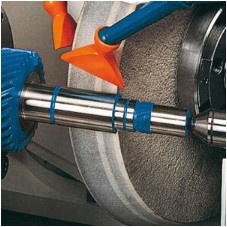Introduction
Cylindrical grinding machines play a crucial role in the manufacturing industry, serving as versatile tools for shaping and finishing cylindrical components with precision. This article explores the key components, processes, and advancements in cylindrical grinding machines, shedding light on their significance in modern manufacturing.
Overview of Cylindrical Grinding Machines
Cylindrical grinding machines are power-driven machines designed to precisely shape the outer surface of a workpiece. They are commonly used in industries such as automotive, aerospace, and machinery manufacturing to produce components with tight tolerances and excellent surface finishes. The primary objective of cylindrical grinding is to remove material from the workpiece to achieve the desired shape, size, and surface quality.
Key Components of Cylindrical Grinding Machines
- Workpiece Holding and Rotation:
- The workpiece is securely held in place by centers or chucks, depending on the specific requirements of the application.
- Rotation of the workpiece is achieved through the use of a spindle, which ensures uniform material removal and consistent results.
- Grinding Wheel:
- The grinding wheel is a crucial component that removes material from the workpiece. It comes in various shapes and sizes, and its composition varies based on the material being machined.
- Abrasive grains, such as aluminum oxide or silicon carbide, are bonded together to form the grinding wheel. The choice of abrasive and bonding material depends on the specific machining requirements.
- Headstock and Tailstock:
- The headstock supports the workpiece spindle and is responsible for its rotation.
- The tailstock provides additional support for longer workpieces, ensuring stability during the grinding process.
- Wheelhead:
- The wheelhead houses the grinding wheel and can be adjusted to achieve the desired depth of cut and angle of approach.
- Modern machines often feature CNC-controlled wheelhead for increased precision and flexibility.
Cylindrical Grinding Processes
- External Cylindrical Grinding:
- In external cylindrical grinding, the outer surface of the workpiece is machined. This process is commonly used for producing shafts, cylinders, and other cylindrical components.
- Internal Cylindrical Grinding:
- Internal cylindrical grinding involves machining the inner surfaces of a workpiece. This is often used to create precise bores or internal features within a component.
- Centerless Grinding:
- Centerless grinding eliminates the need for centers and chucks. The workpiece is supported between two wheels – a grinding wheel and a regulating wheel – as it is fed through, allowing for high-volume production and excellent roundness control.
Advancements in Cylindrical Grinding Technology
- CNC Technology:
- Computer Numerical Control (CNC) technology has revolutionized cylindrical grinding. CNC machines offer greater precision, repeatability, and flexibility in machining operations.
- CNC-controlled wheelheads and programmable grinding paths enable complex geometries and tight tolerances to be achieved with ease.
- Advanced Materials and Coatings:
- As industries demand components made from advanced materials like ceramics and composites, cylindrical grinding machines have evolved to accommodate these challenging materials.
- New abrasive materials and coatings on grinding wheels enhance their durability and cutting efficiency.
- In-process Measurement Systems:
- Modern cylindrical grinding machines often incorporate in-process measurement systems to monitor and control key parameters during machining.
- This ensures real-time feedback, allowing for adjustments to be made, resulting in improved part quality and reduced scrap rates.
Conclusion
Cylindrical grinding machines continue to be indispensable in the manufacturing sector, providing the precision and efficiency needed to produce high-quality components. With advancements in technology and materials, these machines are continually evolving to meet the demands of modern industries. Whether it's achieving micron-level tolerances or efficiently processing advanced materials, cylindrical grinding machines play a vital role in shaping the future of manufacturing.


No comments yet